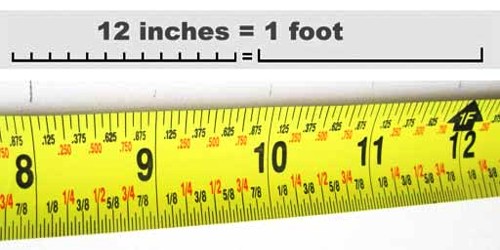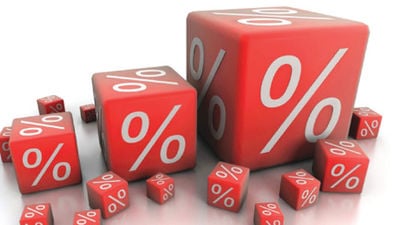Rates are measures of change in quantities over time or other variables, expressed as ratios or comparisons, often depicting how one quantity changes concerning another, like speed, growth, or proportion.
A rate is a way of comparing two things. It’s a ratio that relates two rates so that you can know how much of one goes with the other.
Rates are commonly used in many situations such as in a grocery or when exchanging currency.
Unit rates, also called single-unit rates, are a special type of ratio that compares 1 unit of something with a different number of units of something else.
Look at the meat price example of “$56 per pound”. You can see that it involves quantities of two different things. $56 refers to dollars or money while pounds deal with the weight of meat.
By ‘per pound” we mean just one pound. So, one pound of meat costs $56
Turning Any Rate into a Unit Rate
Any rate can be converted into a unit rate. You do this by dividing both the top figure and bottom figure with the bottom figure to give a 1 at the bottom.
Here are a few worked examples:
- A Speed of 450 ft in 5 hrs.:
Divide 450 by 5 (you divide both the top and bottom numbers with the bottom number)
450/5
= 90/1 (unit rate is 90 ft per hour)
- A cake-eating rate of 32 cakes in 1 minute
32/1
In this example, the bottom number is already a 1 so it already gives you the unit rate.
Dividing both sides with the bottom number still gives the same result.
= 32/1 (unit rate is 32 cakes. per minute)
- 38 cricket chirps per 25 minutes
38/25
In this example, even though 38 is not divisible by 25, we divide both sides by 25 so that the denominator becomes 1
= (38/25)/1
=1.52/1 (this gives a unit rate of 1.52 chirps per minute)
Here are 10 examples of rates in everyday life
1. Conversion between two measurement systems

Many problems require changing from one type of measurement unit to another.
For example, we may be required to convert 36 inches into feet. This can be done if we know the unit rate (ratio) of inches to ft.
This rate is 12 inches per foot. So, for every 1 foot, we have 12 inches. Therefore, 36 inches gives 36/12=3 inches.
2. Skydiver jumping from a plane

If a skydiver falls at the rate of 210 feet in 6 minutes from the sky, we can determine the unit rate by dividing 120/6. This gives the speed of descent.
3. Earnings per hour

We can compare earnings to hours in the example where a waitress works 50 hours and makes total earnings of $3500
3500/50
This gives a unit rate of $70 per hour.
4. Toys packed per hour

If we want to know how hard someone has worked, we can find how soon she finishes a given amount of work.
For example, in a toy packing factory, if a worker has packed 6600 toys in 30 hours, this gives a rate of:
6600/30 which gives a unit rate of 330 toys per hour.
5. Radiation given off per second

A device called a Geiger Muller counter is used to measure ionization or the presence of radiation in the air. It does so by producing clicks.
By counting the number of clicks we can know the amount of radiation. For example, 150 clicks in 20 seconds give a unit rate of 150/60 or 2.5 clicks per second
6. Production cost per unit

If a company wants to know what its production rate costs are, it can compare costs incurred to produce a given number of products.
For example, if it spends $4,550 to produce 50 computers, this gives a rate of $4550 per 50 computers or a unit rate of $91 per computer.
7. Chemical Reaction Rates

This looks at how quickly a chemical reaction proceeds. It can be measured by the rate at which the volume of a reactant is changing during a reaction.
For example, if a reaction releases 300 m³ of carbon dioxide gas in 10 seconds, the unit rate gives the reaction rate of 300 m³ /10 s or 30m³ per second
8. Per Capita Income

When measuring national wealth levels, economists typically use the concept of per capita income.
This shows the average person’s wealth which is an indicator of how well off the average citizen is.
The number is a unit rate that takes the total income earned in the country and divides it with the number of people.
9. Frequency Of Events

We can compare how rare or frequent events are by using rates or unit rates.
For example, what is the frequency of earthquakes?
If 300 earthquakes have occurred in 2000 years this gives a rate of 300 earthquakes per 2000 years or 200/3000=0. 067 earthquakes per year.
10. Identifying The Better Deal

Rates can aid decision-making when one wants to pick between two or more options.
For example, if machine A runs for 344.5 minutes on 13 gallons of gasoline and machine B runs for 565 minutes on 25 gallons of gasoline, which is the better machine?
The better one should give you more service (more running time) with the same amount of fuel. You can find this by calculating the unit rates of each.
Machine A gives a rate of 344.5/13 or a unit rate of 26.5 minutes per gallon
Machine B gives a rate of 565/25…. or a unit rate of 22.6 minutes per gallon.
Therefore, Machine A is the better deal.
Conclusion
Rates and unit rates are used in many decision-making scenarios.
They give us a convenient way of making comparisons between different things and calculating ratios.
Related Post: 10 Examples of Ratios in Daily Life

